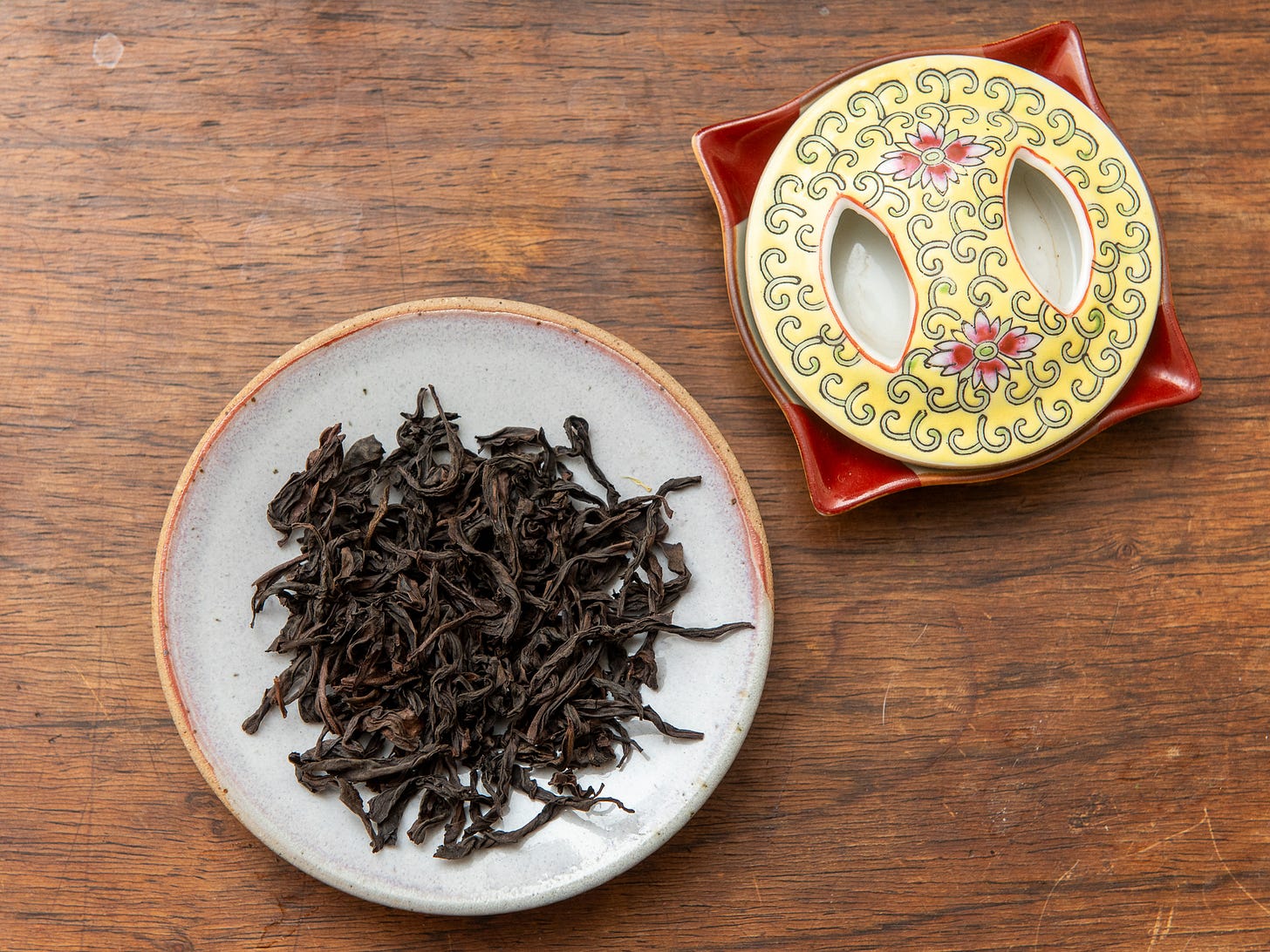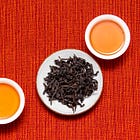A redoubtable rui xiang
The tea: Rui xiang oolong, sold by Wuyi Origin. $10.35 for 25g.
Oolongs from China’s Wuyi cliff region have a reputation of connoisseur brews that demand skill to steep and taste them properly. No so with this winning variety, an affordable and easy-drinking tea that rewards closer attention, but is also down for a low-key cup. I can’t quit its opulent aroma and toffee flavor that deepens to coconut as the leaves stew in the pot. I’m on my second bag of the stuff.
Rui xiang is a cultivar developed by the Fujian Tea Science Institute in 2003. It’s become popular for its high yield and full aroma. Unlike some other Wuyi tea varieties, it doesn’t turn bitter with prolonged steeping, and the brew tastes rich with floral and fruit notes. Productive growth plus wide appeal make good conditions for an affordable tea. This batch isn’t cheap by any means, but costs far less than the prestigious varieties that yancha heads love to yap about.
The source: Last time we checked in with Wuyi Origin, it was to taste one of their rou gui, an older and more famous cliff tea variety that’s a personal favorite of mine. I’ve enjoyed pretty much everything I’ve tried from this Chinese vendor and some of their teas punch above their weight class. If you want to explore more “serious” yancha style teas, Wuyi Origin’s “boutique rou gui” sparkles in the mouth, a lovely “taste of place” from the mineral-rich soil and careful processing.
To brew: This is an excellent training tea to practice your own brewing. I’ve enjoyed it just about every way I’ve steeped it. If you have a gram scale, you can test a few gong fu sessions using the methods described here to see how minimal variations in dosage and brew time affect the outcome of the cup. I encourage you to do this to see what’s to your personal taste. I could tell you every single thing about my brewing parameters, but that doesn’t mean you’ll like the tea the way I made it. Ultimately we must dial these things in for ourselves.
That said, you can see from the photo above that I’m brewing this tea casually in my new giant porcelain pot. This is my tea for when I’m craving yancha but don’t want to fuss with it. A good handful of leaves and lots boiling water is all it needs. Top off with more water when it starts tasting too strong. If you miss the flavor Ben & Jerry’s old Coffee Heath Bar Crunch ice cream, you’ll probably love this one.
Cultivating clones, a botanical horror story
If you ever need inspiration for a body horror story, look to the plant world. Mad scientists spend their lives trying to achieve what plants do by design. Plants create clones and strange chimeras, split their bodies into pieces or combine with the bodies of others, and engage in kinky sexual acts with organisms of entirely different kingdoms. One of the ways humans have harnessed these unholy gifts is the development of cultivars.
A tea (or grape, or banana) cultivar is a botanical word for a clone. When farmers find a tree with properties they want to replicate, they snip off twigs and stick them in soil. Dormant buds in the twigs take root and new growth emerges that is genetically identical to the donor tissue. Plant a field of these new trees and they’ll grow about the same rate, bloom around the same time, and produce fruit that tastes almost exactly the same. The advantages of predictability are obvious. But how much should tea drinkers care? I’ve been wondering about this for all of my tea drinking life, and like everything else, the answer it depends. Though there are some key considerations to keep in mind.
Why tea growers use cultivars
Keep reading with a 7-day free trial
Subscribe to Leafhopper to keep reading this post and get 7 days of free access to the full post archives.








